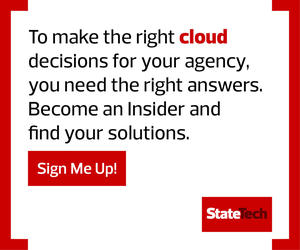Test with the Toughest Customers
Time, budget and a host of other factors will tempt you to skimp on real-world testing. Don’t — especially within government ecosystems.
Of course, run alpha and beta pilots to get a perspective on performance and to understand the dependencies of legacy systems. What’s going to break once you move users to the cloud?
Also, be sure to pilot with the loudest, most thin-skinned users — the ones with the most integrated apps who will complain and submit tickets about everything. If you can make them happy, you have an excellent chance of acing the migration. You’ll also significantly reduce — but not eliminate — the possibility of post-migration problems.
DIVE DEEPER: Which application modernization strategy is right for your agency?
Manage Change and Avoid Trouble with Communication and Training
The unspoken truth of these projects is that users make the migration. You can move all the data without incident and set up all the apps correctly and think you’re on the way to celebrating another success. But if on day one your help desk is inundated with calls from people asking, “What do I do now?” then you’ve failed on the organizational change side of the equation.
One major challenge is that rolling out sweeping changes to systems and coordinating user training tends to be more difficult in the state and municipal government space than with large or tech-savvy companies. Each city, state and county is different. Still, they often have IT infrastructures that are spread over several platforms and generations, and their users are often suspicious of change and automation.
Clear communication and easy-to-understand training are the keys to enhancing comfort with and acceptance of the migration. Users need to know:
- Why is the migration taking place?
- What will be the future state and why is it better?
- When will the change happen?
- What disruption, if any, will the migration create in workflow?
- How can they learn to use the new technology effectively?
Your communications should also detail how the migration affects each access point —Outlook and other Office 365 applications, proprietary applications — and, of course, how the mobile or remote experience will change.
RELATED: The challenges agencies face with hybrid cloud.
Begin with Post-Migration in Mind
It may seem counterintuitive, but the best way to manage post-migration issues is to prepare for them at the beginning of the project. Consider all that will be different post-migration and be ready to respond if something breaks.
If users move seamlessly from tenant to tenant — same systems, identical versions — then you have an advantage. However, if you’re moving from, say, Exchange 2010 and Outlook 2013 to Office Pro Plus and Office 365, you’ll need a plan to deal with the post-migration calls: “Where’s the button to do this? Where’s the button to do that?” You’ll also need a great deal of empathy; remember that, for users, learning curves are always steep.
As you evaluate the various paths for migrating state and local systems to the cloud, keep in mind that these are not nine-to-five, Monday-through-Friday operations. Change, disruption and confusion can have far-reaching effects.
Build your plan with contingencies, options and deep respect for the human factor, and you’ll greatly improve your chances of completing a successful migration.










